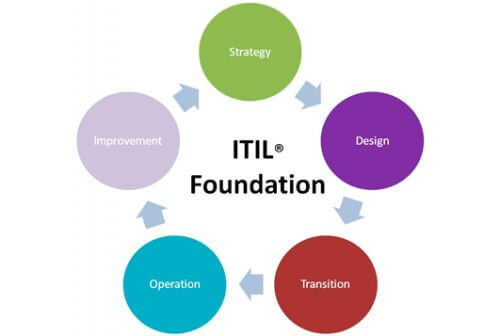ITIL means Information Technology Infrastructure Library, it's an structure proposed by the GOC (Government Office of Commerce) of the United Kingdom, that gathers the best practices in the area of ​​the management of Information Technology (IT) services, in a series of guides.
The British government started the ITIL library in the early 1980s with the aim of improving the service provided by its IT departments.
The objective of ITIL is to provide IT system administrators with the best tools and documents that allow them to improve the quality of their services, that is, improve customer satisfaction while achieving the strategic objectives of their organization. For this, the IT department should be considered as a series of closely linked processes. Pragmatically, ITIL complies with the logic of making IT useful for employees and customers instead of the opposite.
IT departments are not the only organizations that benefit from the ITIL approach, as IT departments are aware that the quality and availability of IT infrastructures have a direct impact on the overall quality of the company.
The scope of ITIL
ITIL is divided into 9 areas that cover all the problems encountered by IT system administrators. The first two are considered the core of the ITIL method:
- Technical support of the service.
- Service delivery
- Infrastructure management
- Administration of applications.
- Administration of the service.
- Business perspective
- Business requirements
- Technology.
TECHNICAL SUPPORT OF THE SERVICE
The technical support area of ​​the service deals with the operation and support of the IT infrastructure. Is divided into the following six processes:
-
Configuration Management
Help the IT infrastructure through an inventory, to achieve its administration and favorable development. -
Incident Management
It improves the detection of incidents and the recovery period depending on the importance for the operation of the company. -
Problem Management
It improves recurring problems and implements preventive solutions to reduce or eliminate its occurrence. -
Change Management
Establishes and anticipates the collateral effects of the changes that have occurred. -
Implementation management.
It guarantees the correct functioning of the different departments under work requirements. -
Availability management.
Ensures the satisfactory level of availability at reasonable cost.
Some of the benefits that the ITIL approach offers in its implementation are:
- User satisfaction (employee and client).
- Clarification of roles.
- Improvement of communication between departments.
- Process control with relevant and measurable indicators, which can be used to identify savings tools.
- Improved competitiveness.
- Increased security (availability, reliability, integrity).
- Capitalization of company data.
- Optimized resources use.
- Comparison and positioning tool in front of the competition.

